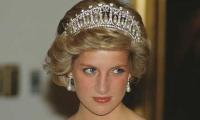Epic moments often have a way of sneaking up on us and Arshad Nadeem’s Olympic record-breaking javelin throw of 92.97 meters was no exception. Pakistan got its first individual gold medal in the Olympics thanks to him. This is a singularly monumental achievement that brought a rare moment of collective joy to millions of people in Pakistan.
Nadeem’s journey from the small town of Mian Channu in Khanewal district reads like the stuff of legends. Born into a humble family, he did not have access to the support system given to talented athletes in many other countries. But because of his raw talent allied with personal characteristics of grit, perseverance, and a laser-like focus on the end goal he was able to achieve his Olympic dream.
In the pantheon of Pakistani sports heroes only one other name stands as tall – Jehangir Khan the squash legend who was unbeaten in 555 matches from 1981 to 1986. If squash had been an Olympic sport back then, Jehangir Khan would undoubtedly have won at least one Olympic gold medal if not more. (Squash will be included in the 2028 Olympics in Los Angeles).
But here’s a reason to celebrate Nadeem’s feat as even more astonishing. Jehangir Khan had role models to emulate and guide him such as his father Roshan Khan who was himself a British Open squash champion; he was also related to the legendary squash champions and brothers, Hashim Khan and Azam Khan, who dominated the world of squash in the 1950s and early 1960s.
Nadeem had no such examples to emulate. With no role models in sight, he carved his path from sheer will and a bit of luck. He had initially taken to cricket wanting to become a fast bowler but his father and then his coach, Rasheed Ahmed Saqi, nudged him towards the javelin.
It would not be farfetched to say that most Pakistanis are unaware of javelin throwing as a sport. After all, there are very few athletic grounds in the cities where one can go and watch sprinters or high jumpers let alone javelin throwers. If we know anything about javelin throwing, it is from watching movies of ancient Greek and Roman warriors in battle.
Arshad Nadeem is now deservedly reaping the financial rewards of his awesome achievement. As the prize money rolls in, here’s hoping that he gets the right advice to protect his name, image, and even that magic number – 9297 – so he’s the one reaping the rewards, not some opportunistic merchandiser.
Critics often scoff at Pakistan’s paltry Olympic representation –seven athletes from a country of 240 million. This critique is, however, misplaced.
Where in Pakistan can the average person learn how to swim or play tennis? Excluding private clubs and hotels, there are scarcely any public access swimming pools or tennis courts available to youth that I am aware of.
Take a city like, say, Sydney, Australia, where there are likely enough swimming pools and tennis courts in community centers and government-funded schools to serve at least 1 out of 100 of its residents. Compare that to Karachi where the ratio of available swimming pools and tennis courts to the population is at most 1 to 10,000 residents. If the comparison were to include the availability of coaching facilities and training equipment, the contrast would be even starker.
Given the lack of access to facilities by the population, how and where can Pakistani children go to learn swimming or start playing tennis? World-class players start from as young an age as five or six which is quite common in richer countries. Consider the case of one of the all-time greats in tennis, Serena Williams, who started playing tennis when she was four. Also, Tiger Woods, regarded as one of the greatest golfers ever, was swinging a golf club when he was just three.
So, there should be no surprises about the dearth of track and field athletes, swimmers and tennis players at the Olympics from developing countries like Pakistan. Which is why a special mention must be made of all those besides Arshad Nadeem who represented Pakistan at the Olympics – Faiqa Riaz, Ghulam Mustafa Bashir, Gulfam Joseph, Kishmala Talat, Ahmed Durrani, and Jehanara Nabi. All of them deserve our thanks and wishes for an even brighter future.
Cricket is popular in Pakistan because it can be played anywhere – whether open streets or back alleys – and requires minimal equipment. That is why we have an abundance of talent in cricket. But there are sports other than cricket that Pakistanis can also excel at.
The country was once a hotbed of hockey talent that was admired and feared by rivals, but that moment has passed. While other countries improved their skills by leaps and bounds by investing in their players and their infrastructure, we rested on our laurels through a sense of complacency. Hockey certainly doesn’t get the time and attention from our sports administrators that it once did. This needs to change.
Football, the world’s favourite sport, is an afterthought in Pakistan. There is plenty of domestic talent but it needs nurturing.
Take a walk in a local park (and there are very few that allow football practice) and see some of the shoeless kids kicking a football with impressive power. However, since these kids are mainly from poor families they will likely be expected to join the labour force to help support their kin which would end any ambitions they may have harbored about becoming footballers.
If we wish to become a serious contender in football on the international stage, we should develop grassroots football talent by selecting youth to train at football academies with their schooling expenses being borne by the local administration. However, needy parents would need to be compensated through some monthly stipend for letting their children continue with their education and also train as footballers instead of working and earning to support the family.
For instance, promising 12–13-year-olds could be supported for an initial period of two years after which further support would be contingent on their skill development and their commitment to furthering their football playing abilities. This support could be provided for two-year periods and reevaluated at the end of each two years till the trainee is 18 years old. After this, they would either be able to join leagues sponsored by local entrepreneurs or go on to higher education if this is what they want.
Of course, this vision requires more than just wishful thinking. It demands real investment in infrastructure, coaching, and a shift in how we value sports other than cricket.
Hiring experienced sports consultants with knowledge of how a sporting culture can be developed at the grassroots level would be an obvious first step. They could also help answer interesting questions such as how South Sudan was able to field a world-class basketball team in the Paris Olympics despite coming into existence only as recently as 2011. (In a pre-Olympics warm-up match, South Sudan came within one point of defeating the mighty US basketball team – the Olympic gold medal winners.)
Pakistan’s sports future is bright if we’re willing to invest in it. And as Arshad Nadeem has shown, all it takes is one spectacular throw to change perspective.
The writer is a group director at the Jang Group. He can be reached at: iqbal.hussain@janggroup.com.pk
MPAs ask for their salaries and benefits to be at par with high court judges and exempt from tax
This system fosters and places premium on VIPs, facilitating VIP culture, which is alive and kicking
Imagine this waste covering over 15,500 cricket stadiums, piled three meters deep every year
If there is one thing that can be gleaned from politics today, it is that we no longer speak same language
Postman argues that “typographic mind” was yielding to “televisual mind”
Pakistan is well poised to meet opportunities that Artificial Intelligence will offer for developments in industries







